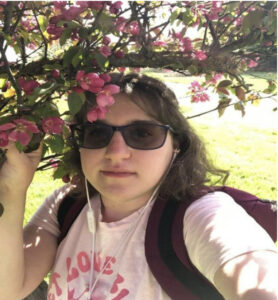Today, September 21st, is International Day of Peace. The 2019 United Nations theme is climate action for peace.
The word “peace” has developed a large spectrum of meanings. In its simplest form it announces the cessation of human conflict or violence between individuals or groups. Its highest meaning denotes a rational or sane state of relationships, in which all parts of a community commit to work together in just harmony, with unconditional mutual respect, to maintain a caring reality that supports the well-being of all.
Since the first tree was ripped from the ground in anger by a primitive human, and wielded against his adversary, the environment has paid a terrible price for escalating human violence. Nothing will slow down climate change more effectively, or heal the environment more quickly, than ending human wars of destructive violence, followed by reforestation of the planet.
Siege warfare was prevalent during the medieval period as Europe’s aristocracy forced their people to fight over the best lands. Armies destroyed each other and the countryside, as they: re-routed natural waterways, burned or cleared forests, which drove animals and fish from their natural habitats, just to take a castle and its wealth.
Then came the colonial period launched by European powers that brought waves of destruction, both human and environmental to the New World. Colonial powers that had feuded with each other for centuries failed to grow healthy relationships based on mutual respect. They brought the same destructive practices to the New Worlds.
Europe destroyed its own great forests during centuries of war making, and now it needed wood from the colonies to build its fleets. Colonial armies built military fortresses, dams, and canals, defacing the landscape, and destroying natural habitats.
Large scale human violence is known as war, a destructive form of social entropy that attacks the environment before it attacks humanity. Each war makes enormously wasteful demands on the environment in order to build increasingly destructive war machines.
Planet Earth is always the first victim of war because it’s the sole source of war materials. When the architects of war forced millions of humans to confront and destroy each other during WWII, they did not relent until they succeeded in destroying and contaminating huge parts of Europe, Asia, and Japan. Destruction of the environment was so enormous that entire historic cities where millions of people once lived, had to be rebuilt. Rich agricultural lands surrounding cities were replaced with enormous non-productive cemeteries. Many agricultural regions had to be decontaminated from war pollution, and restored to health. While the scale of modern warfare is global, the pattern of destruction is historic.
The Amazon basin still suffers because of the contribution it was forced to make to WWII. It was turned into an environmental battleground when sections of it were destroyed to harvest rubber for allied war machines.
The use of hazardous materials like uranium for war, has contaminated communities where uranium is extracted, processed, and stored. Some nations conscripted their nuclear industries to produce bomb grade nuclear materials. Mountains of depleted uranium that contaminated nearby communities were made into low-grade nuclear munitions, and are used to contaminate the land of enemies. We have seen how nuclear weapons create dead zones known as environmental wastelands.
This is the time to learn how to manage all of our relationships with less violence, and more care, whether it be with humans, the land, or all the creatures who live here with us. Restoring the forests and nurturing them back to health, will be a big step to counter climate change. As we learn to respect nature’s communities, we will hopefully learn how to respect all human communities as well.

Steve is a lifelong community activist, who’s main interests are human rights and public safety. He found the shamanic path to be a natural fit, and believes that discovering our spiritual sovereignty and growing it, will heal and liberate us.
“Darkness cannot drive out darkness: only light can do that. Hate cannot drive out hate: only love can do that.” ― Martin Luther King Jr., A Testament of Hope: The Essential Writings and Speeches

Take one minute today at noon (all time zones) for a global minute of silence.
See all Art of Autism Poetry and Art for Peace Blog Posts.
Header image: Emy Spinks “York the Shambles”









https://dostiwelfare.org/education-a-unified-solution-for-peace-and-climate-action/
Education is the only solution for sustainable peace and climate action